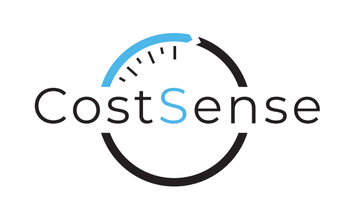In the world of business finance, three core documents are essential for understanding a company’s financial health: the income statement, balance sheet, and cash flow statement.
Each of these financial statements provides unique insights, and together, they form a comprehensive picture that guides business leaders in making informed decisions.
Let’s break down these financial statements, their key components, and how they interrelate to support strategic business decision-making.
1. Income Statement: The Profitability Tracker
The income statement, also known as the profit and loss statement, is the go-to document for assessing a company’s profitability over a specific period. It details revenues, expenses, and profits, providing a snapshot of how well the company generates earnings from its operations.
Key Components:
- Revenue: Total income from sales and other sources.
- Expenses: Costs incurred in the process of earning revenue, including operating expenses, cost of goods sold (COGS), and taxes.
- Net Income: The bottom line, showing whether the company made a profit or loss.
Decision-Making Insights:
- Profitability Analysis: Helps evaluate the company’s ability to generate profit from sales.
- Cost Management: Identifies areas where costs can be cut or optimized.
- Revenue Trends: Assists in forecasting future sales and setting realistic targets
2. Balance Sheet: The Financial Position Snapshot
The balance sheet provides a summary of what the company owns and owes at a specific point in time. It’s divided into three main sections: assets, liabilities, and equity.
Key Components:
- Assets: What the company owns, including cash, inventory, property, and receivables.
- Liabilities: What the company owes, such as loans, accounts payable, and other debts.
- Equity: The residual interest in the assets after deducting liabilities, representing ownership value.
Decision-Making Insights:
- Financial Stability: Assess the company’s ability to meet its short-term and long-term obligations.
- Investment Evaluation: Determine the company’s capacity to invest in new projects or assets.
- Risk Management: Analyze the balance between debt and equity to maintain a healthy financial structure.
3. Cash Flow Statement: The Liquidity Lens
The cash flow statement tracks the flow of cash in and out of the business, highlighting the company’s liquidity and ability to generate cash. It’s divided into three sections: operating activities, investing activities, and financing activities.
Key Components:
- Operating Activities: Cash generated or used in the core business operations.
- Investing Activities: Cash spent on or generated from investments in assets, like property or equipment.
- Financing Activities: Cash obtained from or repaid to investors and creditors, such as loans or dividends.
Decision-Making Insights:
- Cash Management: Ensures the company has enough cash to cover operational needs.
- Investment Strategy: Guides decisions on asset purchases or divestments.
- Financing Decisions: Assists in planning for debt repayment or raising new capital.
How they work together:
All three financial statements serve distinct roles, but their real power lies in how they interconnect to provide a complete financial narrative.
By examining how these statements complement each other, businesses can gain deeper insights that are not visible when looking at each statement in isolation.
1. Profitability vs. Cash Flow: Bridging the Income Statement and Cash Flow Statement
While the income statement shows profitability, it doesn’t tell the whole story about cash flow. For example, a company can report high net income on the income statement but still face cash shortages if the profits are not yet realized in cash, such as through outstanding receivables.
This relationship highlights the importance of monitoring both profitability and cash flow to avoid liquidity issues that can arise even when a business is profitable. It emphasizes the need for effective receivables management and cash flow planning.
Example:
ABC Electronics reported the following in 2024:
Income Statement: Revenue $500,000, Expenses $400,000, Net Income $100,000
From the income statement, ABC Electronics appears to be doing well, with a net income of $100,000, suggesting profitability.
Cash Flow Statement: Cash Flow from Operating Activities: -$30,000
Balance Sheet: Accounts Receivable Increase $70,000; Inventory Increase: $20,000
Despite the profit, the cash flow statement shows a negative cash flow of $30,000 from operating activities. This is primarily due to an increase in accounts receivable ($70,000) and inventory ($20,000), indicating that a significant portion of the company’s sales haven’t yet been collected in cash, and inventory levels are high, possibly tying up cash that could be used elsewhere.
Decision-Making Insight: The company needs to tighten its credit policies to reduce the collection period of receivables and better manage inventory levels to free up cash.
2. Financial Position and Profitability: Connecting the Balance Sheet and Income Statement
The balance sheet and income statement are linked through retained earnings, which represent cumulative profits retained in the business. Changes in profitability directly affect the balance sheet’s equity section.
This connection helps businesses understand how operational performance impacts overall financial stability. A strong balance sheet with growing equity from retained earnings indicates a company is reinvesting in itself and strengthening its financial foundation.
Example:
XYZ Manufacturing reported the following in 2024:
Income Statement: Revenue $1,000,000; Net Income $150,000
Balance Sheet: Asset $800,000; Liabilities $400,00; Equity (beginning of year) $350,000; Equity (end of year) $500,000
At the beginning of the year, XYZ Manufacturing’s equity was $350,000. After generating a net income of $150,000, this profit is added to retained earnings, increasing total equity to $500,000 by the end of the year.
Decision-Making Insight: The increase in retained earnings strengthens the company’s equity position, making it more attractive to investors and lenders. The company can consider using its stronger financial position to invest in new opportunities or negotiate better credit terms with suppliers, leveraging its improved financial health.
3. Asset Utilization and Efficiency: Aligning the Balance Sheet and Cash Flow Statement
The balance sheet shows what assets the company holds and its financing through liabilities and equity. However, it doesn’t show how effectively these assets are being used, which is where the cash flow statement provides critical insights.
This alignment helps businesses assess whether their investments in assets are yielding expected returns. For example, a company might need to re-evaluate its inventory levels if cash flow indicates excess stock that isn’t converting to sales quickly enough, thus tying up cash unnecessarily.
Example:
A startup company reported the following in 2024:
Balance Sheet: Total Assets $1,200,000; Current Assets (including $400,000 in inventory); Total Liabilities $600,000; Equity $600,000
Cash Flow Statement: CF from operating activities -$50,000; CF from investing activities -$150,000
The company shows a substantial cash outflow of $150,000 in investing activities due to the purchase of new equipment, but the company is experiencing a negative cash flow of $50,000 from operating activities. The balance sheet shows a high level of inventory ($400,000), suggesting that cash is tied up in unsold products.
Decision-Making Insight:
The company should assess its inventory management practices to ensure that inventory levels align with sales demand. By improving inventory turnover and reevaluating asset purchases the company can enhance cash flow from operations ensuring that the investments made into assets are efficiently contributing to revenue generation.
These examples illustrate how a combined view of financial statements enables more effective decision-making, ensuring businesses not only thrive in profitability but also maintain healthy cash flow and a strong financial position.
Stay proactive. Stay informed. Stay financially healthy.
— Slava

Slava Tkachev, CostSense Owner & CEO
Slava Tkachev is an accomplished CFO & Financial Controller with 15+ years of extensive experience across industries, within both large corporations & small businesses. Slava holds two esteemed accounting designations: Chartered Professional Accountant (CPA) in Ontario & Certified Management Accountant (CMA) in the USA.
Have questions?
Phone: (905) 650 – 3614
Email: [email protected]


